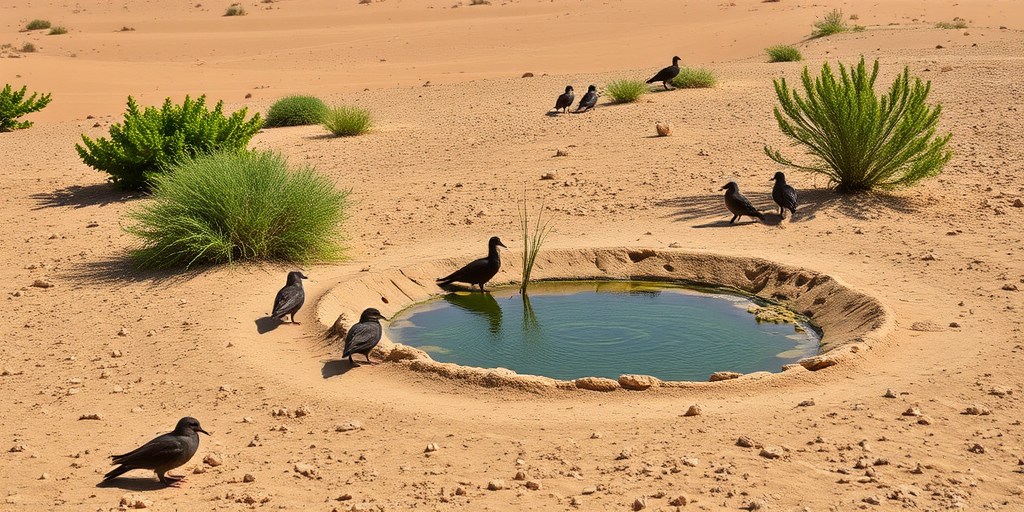Are desert birds merely survivors or innovators of nature’s own design? Amid scorching heat and fragmented water sources, these feathered creatures demonstrate awe-inspiring survival tactics. The arid landscape, with its isolated oases and scant vegetation, challenges conventional biology and reveals remarkable adaptations. This article examines how birds navigate harsh conditions using rapid hydration techniques, specialized foraging behaviors, and energy conservation methods. As desert birding redefines our understanding of resilience, enthusiasts gain a unique opportunity to witness avian evolution at its most inventive stage.
Birding in the Desert: Survival and Adaptation – Migratory Patterns and Stopover Dynamics
During migration seasons in March–April and September–October, up to 500 million birds—including raptors, waders, and small warblers—use narrow flyways to traverse arid landscapes. These vast numbers highlight the desert’s role as a crucial corridor, where precise migratory mapping and thermal mechanisms guide species across challenging conditions.
After enduring exhaustive flights over the Sahara, migratory birds rely on desert oases to counter severe shortages of water and food. Upon reaching these critical stopover sites, species temporarily alleviate dehydration and energy depletion, capitalizing on sparse water bodies and fragmented vegetation. This brief respite offers a chance to regain strength through hydration and refueling, allowing birds to manage the strain of extended travel.
The desert stopovers prove indispensable by providing several key benefits for migratory birds:
- Hydration replenishment from rare water sources
- Energy restoration through the consumption of available food
- Refueling opportunities that support sustained flight
- Safe resting zones that reduce exposure to harsh environmental stressors
This strategic use of stopovers not only mitigates the physical toll of migration but also reinforces native diversity. The ability to recover swiftly at these oases ensures that birds continue their journey effectively, demonstrating an intricate balance between environmental challenge and biological adaptation in one of nature’s most demanding settings.
Birding in the Desert: Survival and Adaptation – Regional Examples and Critical Habitats

The Negev desert in Southern Israel offers a prime example of how isolated green patches serve as critical stopover regions for a variety of bird species. Despite expansive barren landscapes, locations such as Yoham Lake and Barheim Grove punctuate the arid terrain with vibrant, albeit limited, vegetation and water sources. These oases provide temporary relief for birds during migration and help maintain the ecological balance in a harsh environment. Field observations highlight that even sparse resources become central to sustaining both resident and transient avian populations in this locale.
Species including citrine wagtails, yellow wagtails, white wagtails, sandgrass birds, and an unusual woodpecker-like bird have adapted to depend on these intermittent refuges. The seasonal arrival of these birds underscores the importance of the region in supporting native diversity and facilitating ecological restoration amidst challenging conditions. Their survival depends on a delicate interplay of habitat features that mitigate the desert’s extremes.
- Water availability from scarce but dependable sources
- Vegetation patches that offer foraging opportunities
- Safe stopover points that reduce predation risk
- Thermal refuges that help regulate body temperature
Final Words
In the action, the blog post explored critical themes such as harsh desert climates, migratory challenges, adaptive survival techniques, and essential regional habitats.
It outlined practical tips that assist both budding and experienced observers in navigating desert environments.
Birding in the Desert: Survival and Adaptation encapsulates the interplay between nature’s rigor and avian ingenuity.
The discussion motivates continued exploration and practical learning, inspiring enthusiasts to seek rewarding observations amidst dynamic, arid landscapes.
FAQ
How do birds survive in the desert without water?
A: Desert birds obtain water through metabolic processes, consuming moisture-rich foods like insects and cacti fruits, and possessing specialized kidneys that minimize water loss through waste. Many species can concentrate their urine to preserve water.
What physical adaptations help desert birds survive extreme heat?
A: Desert birds have specialized feathers that reflect sunlight, higher tolerance for body temperature fluctuations, and enhanced cooling systems. Their nasal passages reduce water loss during respiration through moisture-recapturing mechanisms.
How do desert birds protect their young from harsh conditions?
A: Desert birds build shaded nests in protected locations, often within cacti or underground burrows. Some species, like sandgrass birds, store water in their chest feathers to hydrate their chicks.
What feeding adaptations do desert birds have?
A: Desert birds possess specialized beaks for extracting moisture from food sources, efficient digestive systems that maximize water absorption, and the ability to consume high-salt content foods without dehydration.
When do desert birds perform most of their activities?
A: Desert birds are most active during dawn and dusk, avoiding peak heat hours. They conduct essential activities like feeding and drinking during these cooler periods to conserve energy and water.
How do migratory birds navigate desert crossings?
A: Migratory birds use celestial navigation, magnetic fields, and visual landmarks. They travel during cooler night hours and utilize thermal currents to minimize energy expenditure during desert crossings.
What role do desert oases play for birds?
A: Desert oases serve as critical refueling stations where birds replenish water and energy reserves. These locations provide essential food resources, shelter, and temporary habitat during migration periods.


